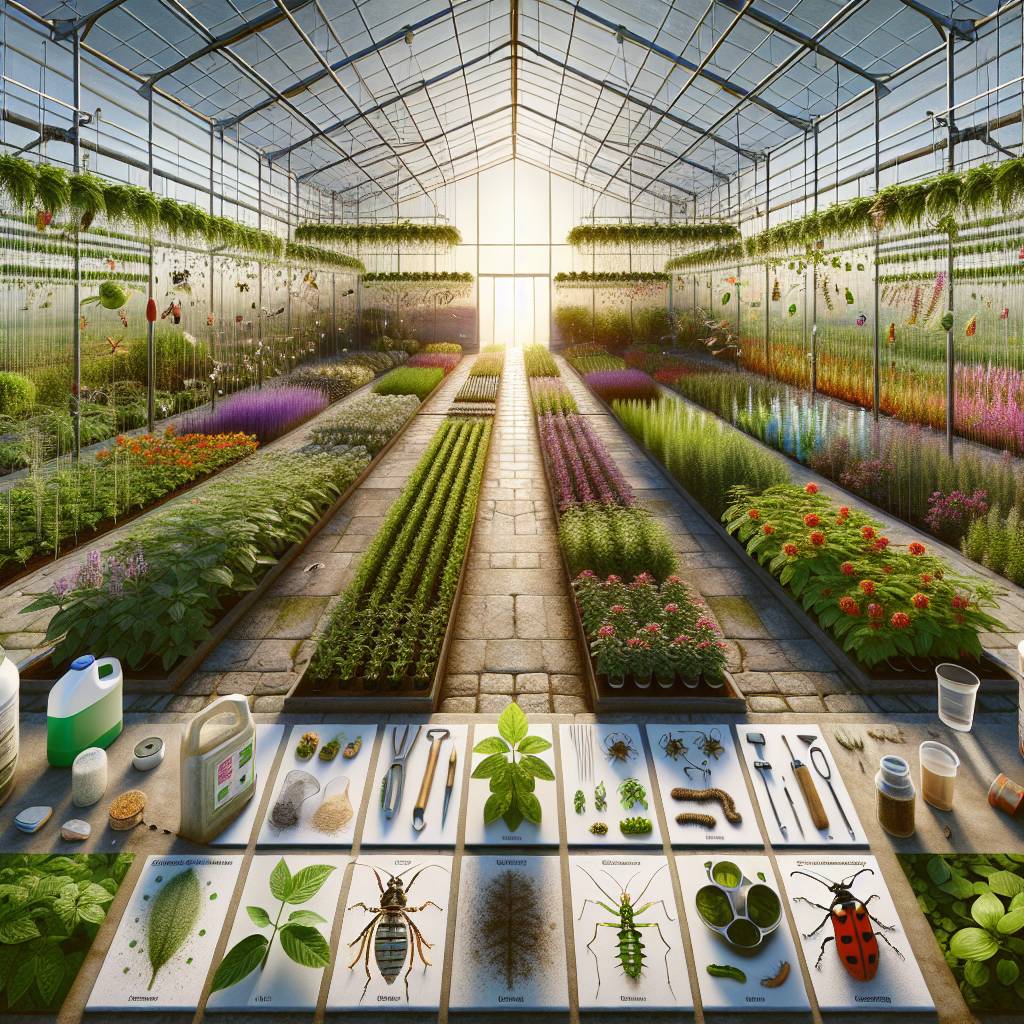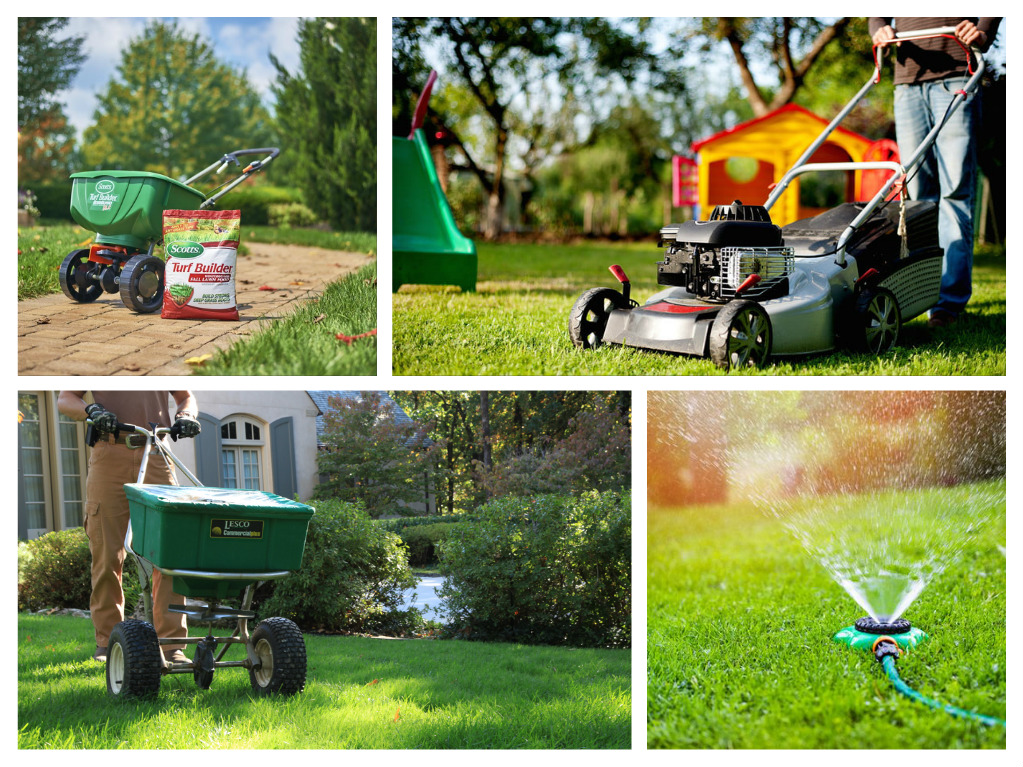Did you know that nearly 20% of the world’s food is lost to pests and diseases each year? Greenhouse growers are constantly seeking effective, sustainable solutions to combat these threats. Enter organic pest control – a game-changer for greenhouse farming. In this post, we’ll delve into the world of organic pest control in greenhouses, exploring its benefits and various methods such as fruiting, contact, and UV light.
Organic pest control offers an environmentally friendly alternative to traditional chemical pesticides, promoting biodiversity while maintaining crop health and fruiting. From beneficial insects like ladybugs and predatory mites to botanical extracts and microbial insecticides, there’s a diverse arsenal of tools available. We’ll uncover how these methods work synergistically with nature to manage pests without harming the ecosystem or compromising produce quality.
Key Takeaways
- Implementing organic pest management principles involves using natural and sustainable methods to control pests in greenhouses.
- Understanding common greenhouse pests and their organic solutions is crucial for effective pest control without the use of harmful chemicals.
- Utilizing biological control and natural enemies in greenhouses can significantly contribute to pest management by introducing predatory insects or organisms.
- Managing greenhouse conditions, such as temperature and humidity, is essential to prevent the proliferation of pests and maintain a healthy environment for plants.
- Prioritizing soil health is crucial, as it directly impacts pest management, emphasizing the need for organic fertilizers and soil amendments.
- Incorporating beneficial insects for disease management can be an effective strategy, as they can prey on harmful pests and contribute to a balanced ecosystem within the greenhouse.
Understanding Organic Pest Management Principles
Integrated Pest Management (IPM)
Organic pest control in greenhouses is based on Integrated Pest Management (IPM) principles. This approach involves using a combination of biological, cultural, physical, and mechanical methods to manage pests. For example, introducing beneficial insects like ladybugs or lacewings to prey on harmful pests is a common biological method used in organic pest management.
IPM also emphasizes the use of natural predators and parasites to keep pest populations in check. By encouraging the presence of these natural enemies within the greenhouse environment, growers can effectively control pests without resorting to synthetic chemicals. IPM advocates for regular monitoring of pest populations to determine if intervention is necessary.
Environmental and Health Benefits
The goal of organic pest management is to minimize harm to the environment and human health. Unlike conventional pesticide-based approaches, organic pest control methods prioritize the use of non-toxic solutions that do not leave harmful residues on produce or soil. This benefits not only consumers but also farmworkers who are exposed to these environments regularly.
By utilizing natural substances such as neem oil, diatomaceous earth, or insecticidal soaps as part of their integrated approach, growers can effectively manage pests while safeguarding the overall health of their greenhouse ecosystem. The emphasis on environmental sustainability makes organic pest management an attractive option for those seeking eco-friendly agricultural practices.
Importance of Sustainable Practices
Organic pest control aligns with broader sustainable agriculture practices by promoting biodiversity, reducing chemical inputs into ecosystems, and fostering healthier growing conditions for plants. These practices contribute positively towards long-term soil fertility and overall ecological balance within greenhouses.
Moreover, embracing sustainable methods fosters resilience against potential resistance developed by pests towards synthetic pesticides over time. By diversifying tactics through crop rotation or habitat manipulation alongside other IPM strategies like using pheromones for mating disruption or employing barriers such as screens or row covers—organic farmers create an inhospitable environment for many types of pests without harming beneficial organisms.
Common Greenhouse Pests and Organic Solutions
Ladybugs for Aphid Control
Aphids are a common nuisance in greenhouses, but ladybugs can be an effective organic solution. These beneficial insects feed on aphids, helping to keep their population in check. By introducing ladybugs into the greenhouse, you can naturally control the aphid infestation without resorting to chemical pesticides. This method not only protects your plants from damage caused by aphids but also maintains the ecological balance within the greenhouse environment.
Neem Oil for Whitefly Management . Neem oil disrupts the growth and development of whiteflies at various stages of their life cycle, effectively reducing their numbers. Its natural properties make it safe for use around humans and pets while being gentle on plants. By regularly applying neem oil to your greenhouse crops, you can manage whitefly populations without harming beneficial insects or causing harm to the environment.
Insecticidal Soaps for Spider Mite Elimination
Spider mites are a persistent problem in greenhouses, but organic insecticidal soaps offer an environmentally friendly solution. These specially formulated soaps work by suffocating spider mites upon contact while being harmless to plants when used as directed. The application of insecticidal soaps disrupts the life cycle of spider mites and helps prevent further infestations within the greenhouse setting.
Biological Control and Natural Enemies in Greenhouses
Utilizing biological methods is an effective and environmentally friendly approach. One of the primary strategies involves introducing beneficial insects such as parasitic wasps into the greenhouse environment. These tiny warriors seek out and lay eggs inside harmful pests, effectively reducing their populations.
Encouraging biodiversity within the greenhouse can also play a crucial role in attracting beneficial insects for pest control. By cultivating various plant species, you create a more natural habitat that entices these helpful creatures to thrive.
The Role of Predatory Mites
Another essential aspect of organic pest control is harnessing the power of predatory mites as natural enemies against common greenhouse pests like thrips and spider mites. These microscopic predators feed on other small arthropods, including harmful pests, thus assisting in maintaining a balanced ecosystem within the greenhouse.
Predatory mites are particularly useful when dealing with issues related to chemical resistance among certain pests. For instance, some spider mite populations have developed resistance to traditional chemical pesticides used in many conventional farming practices. In such cases, predatory mites offer an alternative solution that circumvents this challenge by naturally keeping these resistant pests at bay.
Benefits of Utilizing Beneficial Insects
The use of beneficial insects for organic pest control presents several advantages over traditional pesticide-based approaches:
- Environmentally Friendly: Unlike chemical pesticides which may have detrimental effects on the environment, beneficial insects contribute to sustainable agriculture without harming non-target organisms.
- Reduced Chemical Dependency: By relying less on synthetic chemicals for pest management, growers can minimize potential health risks associated with pesticide exposure while promoting safer working conditions.
- Long-Term Effectiveness: Once established within the greenhouse environment, beneficial insect populations can provide ongoing protection against recurring pest infestations without requiring repeated applications or treatments.
Managing Greenhouse Conditions to Prevent Pests
Proper Ventilation and Air Circulation
Greenhouses require proper ventilation and air circulation to prevent the buildup of humidity, which can attract pests. When moisture accumulates, it creates an ideal environment for pests like aphids to thrive. By ensuring adequate airflow, you can reduce the risk of pest infestations in your greenhouse.
Adequate ventilation also helps in maintaining optimal temperature levels within the greenhouse, creating an unfavorable environment for many types of pests. For example, high temperatures can inhibit the growth and reproduction of certain insects that are detrimental to plant health.
Regularly cleaning and sanitizing the greenhouse is crucial in minimizing potential pest habitats. This practice disrupts any existing breeding grounds for pests such as aphids or mites, reducing their population over time.
Cleaning also includes removing any debris or dead plant matter from around the foliage and fruiting areas. These organic materials can harbor various pests and their eggs, contributing to infestations if left unattended.
Optimal Temperature and Humidity Levels
Maintaining optimal temperature and humidity levels is essential for preventing pest infestations in greenhouses. Pests often thrive in warm, humid conditions where they have easy access to water sources necessary for their survival.
By controlling these factors effectively, you create an inhospitable environment for common greenhouse pests such as aphids or spider mites. Monitoring moisture levels prevents fungal diseases that may weaken plants’ natural defenses against pests.
UV light exposure is another factor that influences pest control within a greenhouse setting. Utilizing UV light treatments at specific times can help eliminate or deter certain types of insects without harming your plants or beneficial organisms present in the ecosystem.
Soil Health and Its Impact on Pest Management
Promoting Plant Vigor
Healthy soil is crucial for effective pest management in greenhouses. When the soil contains balanced nutrients, it promotes plant vigor, making them less susceptible to pests. For instance, a lack of essential nutrients like nitrogen or potassium can weaken plants, making them more prone to pest infestations.
Healthy soil provides a stable foundation for plants to develop strong root systems. These robust roots enable the plants to better withstand pest attacks and recover more effectively from any damage caused by pests. Ultimately, this results in healthier crops that are naturally more resistant to pests.
Disrupting Pest Life Cycles
Another key aspect of maintaining healthy soil for organic pest control involves implementing crop rotation practices. Crop rotation helps disrupt pest life cycles and reduces the risk of soil-borne diseases. By varying the types of crops planted in specific areas over time, greenhouse operators can prevent the build-up of certain pests that target particular plant species.
For example, if a specific type of vegetable is prone to a particular type of pest when continuously grown in the same area year after year, rotating with different types of vegetables can break the cycle and reduce overall pest pressure.
Enhancing Microbial Activity
Adding organic matter such as compost or well-rotted manure into the soil is another critical strategy for promoting healthy soils within greenhouses. This practice not only improves soil structure but also enhances beneficial microbial activity beneath the surface.
The presence of these beneficial microorganisms plays a vital role in suppressing harmful pathogens and parasites that could otherwise affect plant health. Moreover, these microbes contribute to nutrient cycling processes within the soil ecosystem which further supports overall plant health and resilience against various pests.
Incorporating Beneficial Insects for Disease Management
Ladybugs: Natural Aphid Control
Ladybugs are essential for organic pest control in greenhouses. These beneficial insects are highly effective in managing aphids, which can transmit plant diseases. By releasing ladybugs into the greenhouse, you can naturally control aphid populations and reduce the risk of disease spread among plants. For instance, when aphids attack plants, they not only damage them but also act as vectors for various plant viruses and diseases.
Ladybugs serve as a natural solution to this problem by feeding on aphids and preventing their rapid multiplication. This strategy helps maintain a healthy environment within the greenhouse while minimizing the need for chemical interventions that may harm other beneficial organisms or affect plant development.
Trichogramma Wasps: Parasitic Pest Control
Trichogramma wasps play a crucial role in organic pest management inside greenhouses. These tiny parasitic wasps target moth eggs, thereby reducing the risk of caterpillar damage and disease spread. When moth eggs hatch into caterpillars, they can cause significant harm to crops by chewing on leaves and stems. These pests can introduce pathogens that lead to various plant diseases.
By introducing trichogramma wasps into the greenhouse environment, you create a natural defense mechanism against potential infestations from moths and their destructive offspring. This approach aligns with sustainable agricultural practices by harnessing nature’s own mechanisms for controlling harmful pests without resorting to synthetic chemicals.
Predatory Nematodes: Soil Pest Eradication
Predatory nematodes offer an effective method for targeting soil-dwelling pests such as fungus gnats in greenhouse environments. Fungus gnats not only directly damage roots but also contribute to the spread of root diseases within plants grown in containers or hydroponic systems.
Homemade Organic Treatments for Pest Prevention
Garlic Spray
Garlic spray is an effective organic pest control method that can repel a variety of pests commonly found in greenhouses, including aphids, thrips, and whiteflies. By blending garlic with water and then spraying the solution onto plants, you create an environment that these pests find inhospitable. The pungent odor of garlic acts as a natural deterrent, making it less likely for harmful insects to infest your greenhouse.
Using homemade garlic spray not only helps to keep pests at bay but also avoids the use of harsh chemicals that could harm beneficial insects introduced into the greenhouse for disease management. This makes it an environmentally friendly option for maintaining a healthy growing environment.
Water and Dish Soap Mixture
A simple mixture of water and dish soap can be remarkably effective in controlling soft-bodied insects on plants within the greenhouse. Soft-bodied pests such as spider mites, mealybugs, and scale insects are vulnerable to this solution due to its ability to suffocate them upon contact. When applied correctly, this organic treatment disrupts the life cycle of these pests without posing any harm to your plants or beneficial organisms.
This method is particularly advantageous because it’s easy to prepare and apply while being gentle on your plants compared to chemical alternatives. Using water and dish soap creates minimal environmental impact when compared with synthetic pesticides commonly used in conventional pest control practices.
Essential Oils
Utilizing essential oils like peppermint or rosemary oil offers another natural approach for deterring pests from infesting greenhouses. These essential oils contain compounds known for their insect-repelling properties without causing harm to desirable organisms within the ecosystem of your greenhouse.
Economics and Efficiency of Organic Pest Control Methods
Cost Savings
Implementing organic pest control methods in greenhouses may seem like more work at first, but it can actually lead to significant cost savings in the long run. By utilizing natural predators or organic sprays, greenhouse owners can reduce their reliance on synthetic pesticides. This reduction results in lower chemical input costs, as well as decreased expenses associated with purchasing and applying these chemicals. For example, introducing beneficial insects such as ladybugs or lacewings to combat aphids is a one-time investment that can yield ongoing benefits by keeping pest populations in check without the need for continuous pesticide applications.
Organic pest management also eliminates the need for expensive protective gear required when handling synthetic pesticides. This not only saves money on equipment but also reduces potential health risks for workers who no longer have to handle toxic substances regularly.
Market Value Enhancement
In addition to cost savings, implementing organic pest control practices can enhance the market value of greenhouse produce. Consumers are increasingly seeking out organically grown fruits and vegetables due to their perceived health benefits and reduced exposure to harmful chemicals. By using organic pest control methods, greenhouse owners can tap into this growing consumer demand for healthier and safer food options.
Furthermore, many retailers are willing to pay premium prices for organic products due to their higher perceived quality and environmental sustainability. This means that by adopting organic pest management strategies, greenhouse owners not only save on costs but also stand to earn higher profits through increased product value.
Organic produce is often marketed with labels highlighting its environmentally friendly production process and lack of synthetic chemical residues—factors that further contribute to its enhanced market appeal.
Monitoring and Alert Systems for Greenhouse Pests
Regular Inspections
Regular inspections of plants in greenhouses are crucial for identifying pest problems early. By inspecting the plants frequently, growers can catch any signs of pest damage before it becomes a widespread issue. This proactive approach allows for timely intervention to prevent extensive damage to the crops. For example, by closely examining the leaves and stems, farmers can detect the presence of aphids or mites.
Paying close attention to any changes in plant appearance such as wilting, discoloration, or unusual spots is essential. These visual cues often indicate an underlying pest infestation that needs immediate attention. Inspecting both upper and lower leaf surfaces is important since certain pests prefer specific areas on the plant.
Another aspect of regular inspections involves checking for eggs or larvae that may be present on the leaves or within soil around plants. Identifying these at an early stage can prevent them from developing into mature pests that cause significant harm to greenhouse crops.
Sticky Traps
Sticky traps are effective tools used in organic pest control within greenhouses to monitor flying pests like fungus gnats and whiteflies. These traps consist of yellow or blue sticky cards placed strategically throughout the greenhouse where they attract flying insects due to their color and adhesive surface.
Once trapped on these cards, growers can easily identify which types of insects are present based on their size and shape when examining the traps during routine checks. The information gathered from sticky traps helps determine if there’s a need for additional measures like introducing beneficial insects or applying organic pesticides targeted at specific pests.
Furthermore, using sticky traps provides valuable data about population trends over time by comparing counts from different periods. This trend analysis assists in predicting potential outbreaks before they escalate into severe infestations that require more aggressive interventions.
Automated Monitoring Systems
In addition to manual inspections and sticky traps, automated monitoring systems equipped with sensors play a vital role in detecting greenhouse pests promptly while also providing real-time environmental data such as temperature and humidity levels. These advanced systems help track fluctuations in environmental conditions that might contribute to increased pest activity.
By utilizing automated monitoring systems integrated with sensors specifically designed for detecting pest movement or feeding patterns, growers receive instant alerts when irregularities occur within their greenhouse environment related to pest activity. This enables them to take swift action by deploying targeted organic control methods precisely where needed without delay.
Summary
You’ve learned about the principles of organic pest management, effective solutions for common greenhouse pests, and the crucial role of biological control and natural enemies in maintaining a healthy greenhouse environment. Managing greenhouse conditions, promoting soil health, and incorporating beneficial insects are all essential components of a successful organic pest control strategy. Homemade organic treatments, economic considerations, and monitoring systems play significant roles in the overall effectiveness of pest prevention in greenhouses.
Now it’s time to put your knowledge into action. Evaluate your greenhouse setup, identify potential areas for improvement, and implement the organic pest control methods that best suit your specific needs. By taking proactive steps and staying informed about the latest developments in organic pest management, you can create a sustainable and thriving greenhouse environment for your plants.
Frequently Asked Questions
What are the key principles of organic pest management in greenhouses?
Organic pest management in greenhouses revolves around promoting biodiversity, using natural predators and beneficial insects, maintaining healthy soil, and implementing cultural practices to prevent pests.
How can I effectively use biological control and natural enemies to manage greenhouse pests?
Introducing predatory insects like ladybugs or lacewings can help control aphids, mites, and other pests. Deploying nematodes or parasitic wasps can aid in managing specific greenhouse pests without resorting to chemical interventions.
What are some homemade organic treatments for preventing pests in greenhouses?
Simple solutions like neem oil spray, garlic-pepper tea, or insecticidal soap can be effective homemade remedies for deterring common greenhouse pests while adhering to organic principles.
How does soil health impact pest management in a greenhouse setting?
Healthy soil promotes strong plant growth which is more resilient against pest attacks. It also fosters beneficial microorganisms that contribute to a balanced ecosystem within the greenhouse environment.
Are there cost-effective methods for monitoring and alert systems for greenhouse pests?
Implementing sticky traps, pheromone traps, or digital sensors can provide efficient monitoring of pest populations. These tools offer early detection of potential infestations while being economically viable options for growers.






